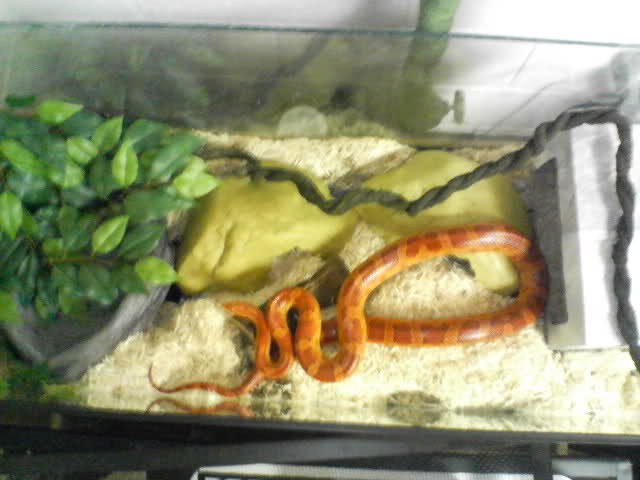Generally accepted guidelines for snake husbandry are similar to all reptiles that are commonly kept as pets. Commonly accepted setups for snakes are as in the setup diagram below. Important, is the thermal gradient where the snake can thermoregulate throughout the tank as it pleases as like all reptiles, they are ectotherms. This is usually done by providing a heat source such as a UV bulb above a basking spot which they will use to heat up. The cooler side has a water bowl a no heat fixtures. They will need hides, climbing structures, and preferably fake vegetation for enrichment purposes.

Diagram credit: Andrew Owen, Cool Companions
Large pet selling companies market snakes and other reptiles as easy to take care of and maintain. If a consumer is to go to the trouble of finding the most basic husbandry standards as stated above, it isn’t unexpected that many will be overwhelmed by what was marketed to them as an ‘easy pet’. After accounting for all of the materials and gadgets that go into a ‘proper’ enclosure, a new snake owner will find costs are adding up, not even factoring the monthly energy bills, food, and bedding costs. Additionally, popular snake breeds like the corn snake can live 15 years or more.

Photo from reptileboards.com by user Herp__Kid
Furthermore, many basic and comprehensive snake care guides are conflicted on whether snakes require a UVB bulb that will provide them with vitamin D normally acquired by the sun and used to properly metabolize calcium. At least one scientific journal states that a source of vitamin D is necessary for all reptiles kept in captivity and that providing several microclimates for them is recommended (Oonincx et al., 2017).
Even with all the ‘proper’ lighting, will a snake be comfortable constantly having constant light shone on it? The ever-popular ball python is a mostly nocturnal animal, yet there is no mention of this on popular pet store websites.

An example of discourse between users on a popular reptile messaging board highlighting the uncertainty of standards of husbandry for snakes.
Ignoring the nature of snakes such as the ball python in the wild, will an inexperienced pet owner be willing to take on even the most basic snake welfare needs potentially over many years?